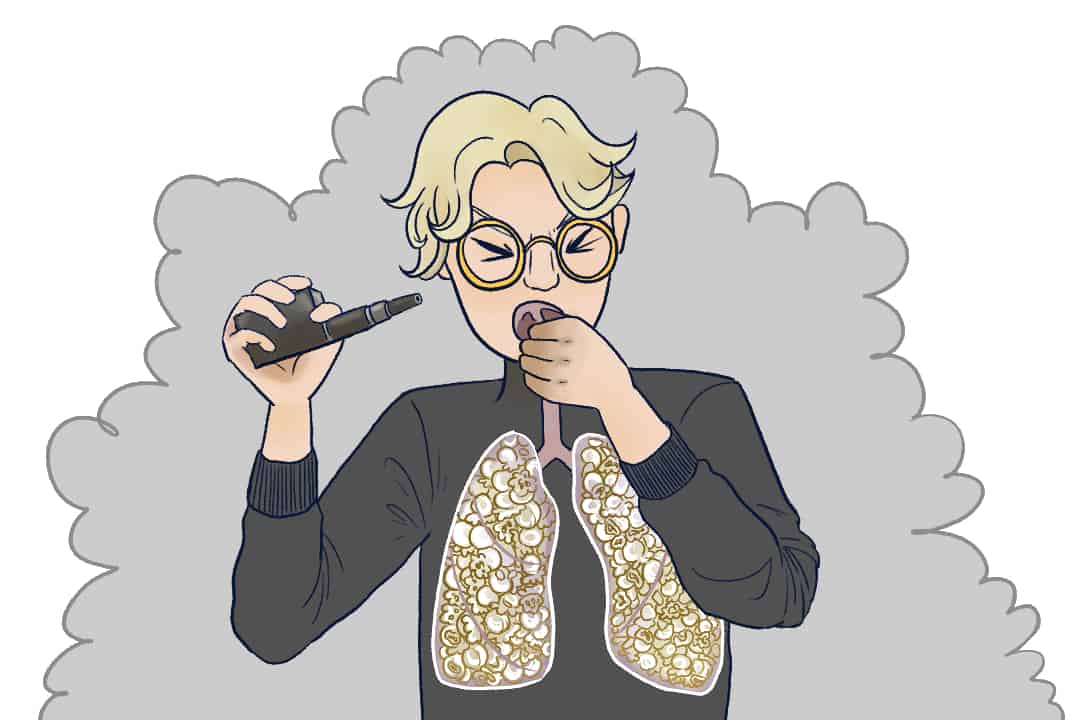Three months after Health Canada issued a warning on the risk of pulmonary illness associated with vaping, a collaborative study involving University of Toronto researchers examined the case of a 17-year-old male with a severe lung condition: acute bronchiolitis.
The teen, who was otherwise healthy for his age, had a five-month history of daily vape usage, using the dew mountain, green apple, and cotton candy flavours, supplemented with tetrahydrocannabinol, better known as THC — the main psychoactive chemical present in marijuana.
The patient’s ultimate diagnosis was bronchiolitis obliterans, more commonly known as popcorn lung. The condition manifests as a scarring of the lung’s tiny airways, called bronchioles, which can hamper breathing and even be fatal. Popcorn lung acquired its common name when workers in popcorn manufacturing plants developed the condition due to the inhalation of the flavouring chemical diacetyl.
Following the publication of the U of T-led case study, the Canadian Medical Association Journal called for a nation-wide ban on flavoured vaping liquids.
Growing health concerns for flavoured e-cigarettes
E-cigarettes burn fluids that commonly contain diacetyl and other flavouring. While they don’t directly contain tobacco, they still contain nicotine — the addictive substance found in tobacco — in varying amounts. Different available flavours have made the e-cigarettes more appealing to young Canadians, who have started using them recreationally.
Not all vape users are aware of the flavouring compound diacetyl, which has been linked to lung damage.
“[The vaping industry] has been very unregulated,” said co-author Dr. Tereza Martinu, an assistant professor at U of T’s Department of Immunology and an affiliate scientist at the Toronto General Hospital Research Institute, in an interview with The Varsity. “There are no regulations that say [companies] have to put all of the ingredients on the label, [so] you don’t know what’s in there.”
There have been reports of adverse reactions related to e-cigarette use, such as lipoid pneumonia, diffuse alveolar hemorrhage, and hypersensitivity pneumonitis — all of which are conditions that cause severe damage to the lungs.
The causes and effects of popcorn lung
“Smoking is known to be very toxic for the lungs, but [this is] over many years of consumption,” said Martinu. She noted that the patient had only been vaping for five months.
The patient’s symptoms included shortness of breath, nausea, and a severe cough. Later, medical imaging and the exclusion of other potential causes led to the final diagnosis of popcorn lung.
Despite this diagnosis, it is unclear exactly which chemicals may have produced the patient’s popcorn lung. It may have been the result of a combination of different chemicals, since vapes can contain a variety of substances.
Flavouring-related popcorn lung as a complication of vaping is rare, but serious. The Canadian Heart & Stroke Foundation has called for a change in the legislation regarding the use of tobacco and vaping products, in the form of an increase in the legal age for e-cigarette use to 21 years of age and regulation minimizing the toxic additives to e-cigarette liquids.


